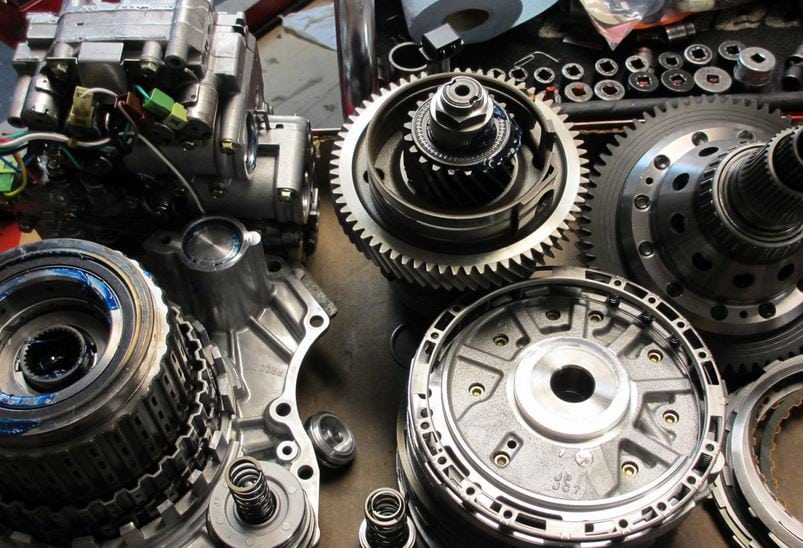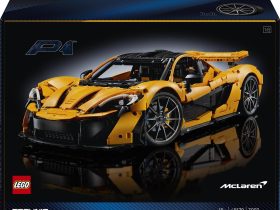Most people are, at best, only vaguely aware of how vehicle size is determined. Most probably don’t care that much, basing “size” as a value of what they simply perceive the vehicle to be.
Which isn’t very scientific and wouldn’t make for much of an article. But it does make this article sound kind of boring.
So, to get you to read this anyway, I’ll mention that, at the very least, knowing the size of a vehicle will give you the chance to look like you know more than the sales person on the car lot suspects. Plus you can impress your friends and use this info as potential pickup lines at the bar.
The great thing about vehicle size categories is that they’re very simple. All you need to know is why you need to know the vehicle’s size and that will determine what metric you use to find the size category. In the U.S. there are merely five options for choosing a size category for your car. Simple!
Those five options for finding a size category are from the U.S. Environmental Protection Agency (EPA), the National Highway Traffic Safety Administration (NHTSA), the Federal Highway Administration (FHWA), the U.S. Census Bureau, and the Insurance Institute for Highway Safety (IIHS). The first four are government agencies, the latter is what insurance companies use to decide how much to not pay you on a claim.
The EPA is for Fuel Economy
If you need to know the vehicle’s size category in order to compare fuel economy with others in its segment, you’ll be using the EPA’s classifications. These are based on the total interior space of the vehicle (passenger volume plus cargo volume) and the vehicle’s shape.
These classifications are also what the EPA uses to measure the overall Corporate Average Fuel Economy (CAFE) for a particular manufacturer. This is how enforcement of fuel economy mandates by the government happen. The whole CAFE thing would require a completely different article to explain. It’s beyond even Facebook relationship status complicated.
Back to it, most of the EPA’s classifications are for two-door and four-door cars. Sedans (and by extension, coupes) are grouped into five options: minicompact, subcompact, compact, mid-size, and large. Examples would be:
- Minicompact would be something like a Daimler Smart Car
- Subcompact would be a Nissan Versa
- Compact a Volkswagen Golf
- Mid-size a Honda Accord
- Full-size or Large car something like a Chrysler 300
Similarly, there are classifications for station wagons (Small, Midsize, and Large). Of course, sedans and wagons are falling out of popularity and more and more buyers are instead looking at car-based sport utilities (aka “crossovers” or “crossover-SUVs”) instead. In this case, the EPA groups all sport utility vehicles (SUVs) together into two categories: Small SUV and Standard SUV. Utilities weighing less than 6,000 pounds are Small and those over that weight (but not exceeding 10,000 lbs) are Standard.
Pickup trucks, truck-based vans, and minivans also have their own categories. Pickup trucks, like SUVs, are grouped into Small and Standard categories with the exception that a truck weighing more than 8,500 pounds is considered Commercial and thus exempt. Minivans are a category by themselves with no sizing. Regular vans are either Passenger or Cargo, which is decided by their seating capacity and total weight.
Pretty simple, right?
But wait, there’s more!
The automotive industry itself, while referring to these classifications, often mixes-and-matches them while ignoring the EPA’s vehicle category names. Especially when it comes to crossovers. Where the EPA sees a “Small SUV,” the automotive journalist or manufacturer might instead see a “Compact Crossover” and label it as such in news items or marketing. Similarly, a Standard SUV per the EPA might be labeled a “mid-sized SUV” to the rest of the world.
This muddying of the waters reflects the disconnect between what most of the industry sees from the consumer side and what the government sees from a regulatory perspective. But there are legal ramifications that could be involved, which changes the tone of claims used by manufacturers when making certain statements.
When a manufacturer claims “best-in-class fuel economy” for their vehicle, that automaker is likely comparing its product to vehicles in the same EPA size category and not what the rest of us might consider its category. That’s because there can be legal issues should they not use the well-defined categories created by the EPA.
But these classifications do make a Jeep Wrangler and a Jeep Renegade comparable in that comparison of MPGs. It also makes a Ford Ranger and a Ford Maverick comparable as well. In both cases, these are “Small” category vehicles. Even though the Renegade and the Maverick are, size- and build-wise, far more comparable than they are to the ones they are lumped in with per the EPA.
EPA classifications can also be hokey when we take common perception into account. Visually, for example, a Mazda 3 sedan and a Mazda 3 hatchback look like two different vehicle types. One a sedan and one a station wagon. The “hatchback” name, however, indicates that there is no fourth roof support pillar towards the rear: a requirement for a wagon by industry design standards and EPA definitions.
This is why the EPA’s classifications, while often cited, are generally ignored by folks outside of the industry. They’re clear as mud. Just like a lot of regulatory hoops. Previous definitions of size classes and designs, for example, meant that the Plymouth PT Cruiser was once a truck. No joke. (Not unlike the car.)
The NHTSA Is All About Star Ratings
For the National Highway Traffic Safety Administration, classifications are much simpler than those at the EPA. The NHTSA is all about crash tests and test dummy body counts. All NHTSA ratings are based on vehicle weight and type. There are five passenger car categories and one category each for SUVs and trucks.
- Passenger cars, mini (sub-1,999 pounds)
- Passenger cars, light (2,000-2,499 lbs)
- Passenger cars, compact (2,500-2,999 lbs)
- Passenger cars, medium (3,000-3,499 lbs)
- Passenger cars, heavy (over 3,500 lbs)
- Sport Utility Vehicles
- Pickup Trucks and Vans
The NHTSA’s crash test results are what appear on the window sticker of the car. They’re a generalized look at the vehicle’s crash worthiness for passenger safety. Most of us who know better, however, use the Insurance Institute’s crash test results instead–as they’re a lot more comprehensive. Getting a 5-Star NHTSA rating is nice, but getting an IIHS Top Safety Pick + rating is much better.
The FHWA Is Mostly About Licensing
If you look at your driver’s license, you’ll see what are usually referred to as “endorsements.” Current Wyoming DLs, for example, will have both endorsements and restrictions listed. A standard operator’s license (aka driving license) here lets the person licensed operate any non-commercial motor vehicle classified by the Federal HighWay Administration as a “passenger car.” Most states use the federal definitions for passenger vehicles versus commercial vehicles, which generally revolve around the number of axles and gross vehicle weights.
There are fifteen classifications in use by the FHWA, most of which concern various sizes, weights, and configurations for heavy commercial vehicles. For most non-commercial drivers, the FHWA’s first three categories (motorcycles, passenger cars, pickups/vans) are the important ones.
Motorcycles are a single category of the FHWA and are defined as being primarily two-wheeled vehicles with a rider sitting atop. So a three-wheeled vehicle like the Polaris Slingshot is considered a car by federal definition whereas a three-wheeled Can-Am is a motorcycle instead. It’s all about seating and steering control with those two. Some states, however, consider any vehicle with less than four wheels a motorcycle, so this delineation has various interpretations.
Passenger cars are all cars, including those pulling trailers. The pickups and vans (officially “Other”) category then defines what we would see as pickup trucks, vans, and sport utilities as well as those with trailers attached.
Almost no one in the automotive industry uses the FHWA’s classifications.
The Census Bureau Is About (Dubious) Statistics
The Census Bureau mostly cares about trucks and uses FHWA classifications to determine what category these vehicles fall into commercially. The statistics produced by the Census are largely used by other government agencies to decide regulatory items. I used the word “dubious” in the section title here because the Census Bureau counts sport utilities, vans, and minivans as “trucks.” Making the outcomes pretty lame.
This lumping of vehicles together is why there are headlines that say things like “Americans buy a lot more trucks than Europe.” Not only is that a “well, duh” kind of statement, it’s also misleading as European governments aren’t always counting sport utilities (a fast-growing segment there) as trucks. Which kind of skews the statistics being used for those headlines.
The IIHS Is About Crash-Testing for Insurance Companies
Finally, we come to the Insurance Institute. The IIHS has six basic categories for vehicles. All of these are based on the vehicle’s curb weight and “shadow.” The curb weight is simply the overall weight of the vehicle. The shadow is the vehicle’s total two-dimensional footprint in square feet (length and width multiplied into footage).
- Micro: any vehicle weighing less than 2,000 pounds
- Mini: a vehicle under 2,499 pounds whose shadow is larger than 70 square feet
- Small: a vehicle over 2,500 pounds (but not more than 2,999 pounds) whose shadow is less than 90 square feet. Also a vehicle 3,000-3,999 pounds whose shadow is 70-79 square feet
- Midsize: a vehicle weighing 3,000 pounds or more whose shadow is between 80 and 89 square feet. Also a vehicle with a shadow larger than 90-99 square feet, weighing 2,500-3,499 pounds
- Large: a vehicle weighing between 3,500-3,999 pounds with a shadow of 90-99 square feet. Also any vehicles weighing 3,000-3,999 pounds with a shadow larger than 100 square feet
- Very Large: Any vehicles weighing over 4,000 pounds with a shadow larger than 100 square feet
The IIHS changes the above categories from time to time as vehicle sizes change, the most recent being to accommodate electric vehicles with their greater curb weights.
The six categories the IIHS uses are used for both crash test ratings as well as insurance statistics. These are a big part of what insurance companies use for determining rates. Where the IIHS publishes its crash test results publicly for anyone to view, its real-world crash statistics, model-year-by-model-year vehicle databases for categorization, etc. are accessible only by its members.
The IIHS crash tests are often more thorough and more closely based on real-world scenarios than are the more generalized tests done by the government via the NHTSA. Thus many in the automotive industry consider these a more accurate interpretation of the vehicle’s safety and safety systems by comparison.
Well, That Was Easy
So now you know all about vehicle sizes. It’s pretty easy once you get the hang of it. Though determining which phraseology to use is more an art than a science. Which is why automotive journalists like me can’t be replaced by computers.
As a consumer, however, you should now be well versed enough to be able to say “well, that compact SUV isn’t really comparable to that more small to midsize option. So I don’t think you’re being fair there” when talking to car dealership employees. Helps you add a little razzle to the dazzle.
Probably won’t help when you’re talking to a mecha..er..repair technician about whether or not you really need to replace the giubo on your Bimmer, though. Just FYI.







